More than almost anything else, motorcycles are about speed. Speed in motorcycles, for its own sake, has a thrill that few other vehicles can match, save for the very few supercars that have nose-bleedingly high price tags.
Thus, for most, motorcycles, despite the inherent danger or perhaps because of it, are always seen as fast to the point of insanity, or in the words of our Head of Editorial, Hafriz Shah, “you fellas are crazy.” But the pursuit of that craziness has yielded machines that are the pinnacle of bike engineering.
The horsepower wars really started with the Vincent Black Shadow, back in 1948 with the “Series C”. Capable of a true 201 km/h from 998 cc and 54 hp, the Black Shadow’s 150 mp/h speedometer was perhaps a tad optimistic, though it did not stop Russell Wright from clocking a world record 297.46 km/h on a “Series D” Black Shadow in 1955.
When the nineties rolled around, the speed wars reached a point when the manufacturers called a “gentleman’s agreement” with each other. In a contest begun by Suzuki with the GSX-R1100 H-model in 1986, followed by the Honda CBR1100, Kawasaki’s ZZR1100, in ‘C’ and ‘D’ forms, reigned for most of the decade, till the advent of the Honda CBR1100XX “Blackbird”.
Things went quiet for over a decade, till 2015 and the launch of the Kawasaki Ninja H2. With supercharging and a claimed top speed of well over 340 km/h, the H2, taking its name from the legendary Mark III H2 750 cc two-stroke triple of the seventies, claimed the crown of the world’s fastest production motorcycle.
In the case of the Kawasaki Ninja H2, this hyperbike – we are loathe to call it something as mundane as a superbike because its performance is on another level – proves that Kawasaki is king-of-the-hill when it comes to the top speed stakes. When it was first launched in 2015, it was like Kawasaki striking that famous Bruce Lee pose with hand extended, and fingers beckoning, “come at me, bro.”
And no one dared. Simply put, the sheer amount of engineering required to make a bike develop this much power, and go this fast, required a commitment that many manufacturers did not wish to commit. Starting with an 988 cc inline-four, Kawasaki added a supercharger, and a quartet of 50 mm throttle bodies, all of which served to let the power plant develop some 200 hp at 11,000 rpm and 133.5 Nm of torque at 10,500 rpm.
Now, in this day where makers commonly claim 200+ hp from their bikes, the Ninja H2’s power numbers don’t sound like much. That is until you realise, to quote the erstwhile Dr Gregory House, “everybody lies.”
So, does the Ninja H2 actually put out that much power to claim the title of world’s fastest production bike? The answer to that, after living with the H2 for a week, and riding its track-only sibling, the H2R, is an emphatic “yes.”
But, what is it like to ride a motorcycle with this much power and throttle response? Well, for the one thing, the first thing you need to throw out the window is the response you expect from a bike and the usual engine behaviour.
On the first approach, we were struck but how small, visually, the Ninja H2 looked. Getting on, we expected a hefty, bulkier machine than the H2’s sibling, the Kawasaki Ninja ZX-10R.
From the specification sheet, the Kawasaki Ninja H2 weighs in at 240 kg, against the ZX-10R’s 196 kg. Grabbing the low-set handlebars though, belied that, causing the author’s son to remark, “this bike feels really light.”
The Ninja H2 isn’t at all light though, and the reason is because of the variable-speed supercharger, driven off the crank by a set of gears. The two-stage blower grabs cool air from the honking great nostril air intake on the left front cowl, and is fed through an intake runner running on the left side of the engine.
Thing is, the Kawasaki Ninja H2 is designed and built to do one thing only, to be the fastest bike in the world, and everything else be damned. We found this out as we settled into the saddle. While cut in front in the normal manner – and it wasn’t that long a reach to the ground, 810 mm, we checked – the seat pan itself is long, allowing the rider to push his or her butt right to back, and get under the fairing bubble.
We then sat by and listened to the Kawasaki technical person give us a briefing on the various functions of the Ninja H2, of which there is a bewildering plethora. What was needed was about a half-day perusing the owner’s manual and messing about with the switches, what we got was nearly 20 minutes of “if you press this, it does that.”
The briefing was important as the Ninja H2 comes with traction control that has three pre-sets and a custom mode, launch control, ABS, engine-braking control, up-and-down quickshifter and an electronic steering damper. All these riding aids come with various levels, and interact with each other in a multitude of ways.
Suffice it to say, on our first ride as we left the Kawasaki Malaysia headquarters in Shah Alam, we put everything in “Road” mode and left it well enough alone, at least till we got used to the H2. Starting off, and grabbing the clutch, we noticed the effort needed to bring the lever back to the bar.
If you’re one of those slightly dainty men, this is not the bike for you. The clutch lever effort almost reached Bullworker level – if you don’t know what a Bullworker is, go ask your dad – and certainly gave our left forearm a good workout.
As befits a bike designed to chase top speed numbers, the Ninja H2’s riding position is designed to let the rider get into a chin-on-the-tank crouch. The reach out to the handlebars, while not as long as we expected, placed the torso almost horizontal.
Riding the H2 out, the first thing we noticed was the amount of heat rising from the engine bay. We expected this, considering the amount of horsepower the inline-four is putting out, and lived with it, with keeping our left leg out of the worst of the heat and leaning over slightly to the right.
Taking the Ninja out on our usual test loop around Ulu Yam and up the mountain, we found that the bike was not all about straight line speed. The fully-adjustable 43 mm diameter front forks, fitted with Brembo M50 Monobloc brake calipers, kept the H2’s front end tracking straight and true, despite taking certain corners at very high speed.
At the back end, the KYB adjustable damper – the 2017 Ninja H2 comes with a Ohlins TTX36 unit – was set-up slightly hard for low speed work, but proved to be compliant and supple at extra-legal speed. While we did wish for more suspension compliance at closer to normal highway cruising speed, we are constantly reminded, riding the H2, that this machine is built for speed.
That is not to say the Ninja H2 couldn’t be treated as a run-of-the-mill superbike, though the running costs would rapidly become atrocious. Riding the H2 around town was possible, though hard work.
While the H2 disguises its weight better than the ZX-10R, it is still a heavy bike to hustle around at low speed. Truly, for the H2, the magic happens out on the highway.
During a day trip down south, we got to know the Ninja a little better, and once we were accustomed to the instant acceleration provided by the supercharged engine, we got very addicted to it.
Romping down an open stretch of highway and letting the H2 have its head, the acceleration as we twisted the throttle open built so quickly, we suddenly realised we were going well beyond the space of time our reflexes could kick in, should, say, we needed to slam on the brakes or take evasive action.
That is how fast this bike is, and yes, we found it most intoxicating. Blasting past cars on the highway, secure in the knowledge that unless there was a prancing horse or raging bull on the bonnet, nothing was going to catch us.
The power developed by the H2 is so great, that we were spinning up the rear tyre at something over twice the national speed limit. We only noticed when our riding buddy asked, “is the rear tyre rubber supposed to curl up in that way?”
This is when the Ninja H2 is truly in its element, blasting down the highway, watching the numbers on the speedometer flick over into digits that other superbikes do not even approach. And you really should only ride the H2 on the highway, between petrol stations, because this is the thirstiest bike we’ve ridden outside of a racetrack or drag strip.
During our time with the H2, the on-board computer recorded a worst fuel consumption figure of 8.7 litres per 100 km. Judicious use of the throttle, bumbling along following our buddy on his Hyperstrada, gave us… 7.9 litres per 100 km.
So, yes, if you’re planning on taking the H2 on any long jaunts, pay attention the fuel consumption afforded by the 17-litre fuel tank. In theory, that should give you about an hour’s riding, give or take, which is about as much as your back could take crouched over in race position, really.
As we spent more time with the H2, we started experimenting with the various traction control and ride modes, along with the launch control and engine braking. Let us put it this way, switching everything off made the H2 not quite unrideable, but close.
Twisting the throttle open too quickly would make the rear wheel spin up, and with the engine braking off, shutting the throttle did nothing to slow the bike down. While all this might have been really entertaining on the track, doing it on the road was not so much fun.
Not that the Ninja H2 was completely unrideable in “off” mode, but more caution was needed. Even when set to rain mode, and the engine power delivery in the softest setting, there was enough urge to propel the bike forward rapidly enough to make the author’s eyes go big inside the helmet.
It was at this point we made our acquaintance with the Kawasaki Ninja H2’s evil twin, the H2R. As can be surmised with hyperbikes like these, aerodynamics is of supreme importance, as the faster you go, the more engine power is needed to overcome air resistance.
In the case of the H2, this includes having mirror stalks shaped like wings, and small winglets tucked into ducts in the seat cowl. For the H2R, these items are replaced with proper carbon-fibre wings, and there are winglets stuck on either side of the fairing.
These serve to keep the H2R on the ground, since the bike is fully capable of exceeding the take-off speed of an Airbus. This is in addition to having upper bodywork and the air intake runner made from carbon-fibre, as well as the wheels being shod with racing slicks.
As a showcase of Kawasaki’s skill in making things go fast, the Ninja H2 makes no apologies for what it is, and truth be told, we enjoyed the bike, as a piece of engineering art. The quality of build for the Ninja H2 is beyond compare, right up there with, say, a Porsche GT3.
This includes the special black chrome finish on the H2’s tank and body panels. When we collected the bike, we noticed some scratches on the tank and rear seat cowl, and asked if it could be polished out.
We had to gulp when the Kawasaki Malaysia tech told us that the mirror-coated Spark Black finish needed a special chrome polish from the Kawasaki catalogue. The price? RM1,200.
Speaking of pricing, the Kawasaki H2 is not cheap, though for the money, you get an awful lot of bike and amazing performance. You will have to fork out RM153,000 for the H2, while the H2R – for track use only – will set you back RM260,000.
So, who needs a Kawasaki H2, or for that matter, a H2R? Well, for a rider, this bike is, indeed, the fastest motorcycle you can purchase off the showroom floor. For some riders that is enough of a cachet to own one.
As for the supercharged engine, the H2 is on another level entirely when it comes to road-going motorcycle performance. The instantaneous response and effortless acceleration would make it worth the entry price, for others. At the end of it, what you have is a halo bike, meant to be the best it can be with no compromise, or pretence at being easy to live with, or affordable.
In any case, the Kawasaki Ninja H2 is a motorcycle on the level of, say, a Lamborghini or Ferrari, lovely to look at, and supremely fast and quick, but few riders will get the chance to ride one, much less own. And the author would so very much like to add one to the stable.
GALLERY: Kawasaki H2
GALLERY: Kawasaki H2R
Looking to sell your car? Sell it with Carro.

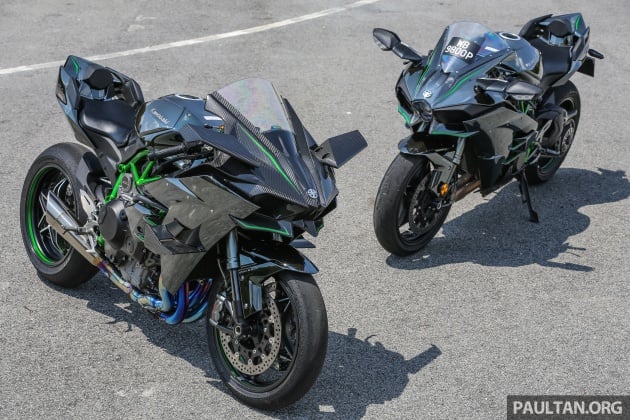
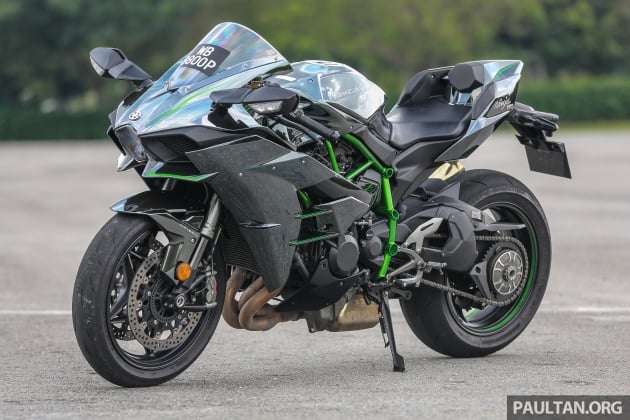
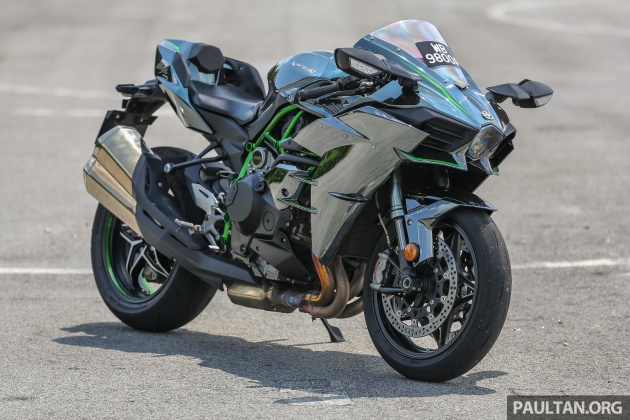
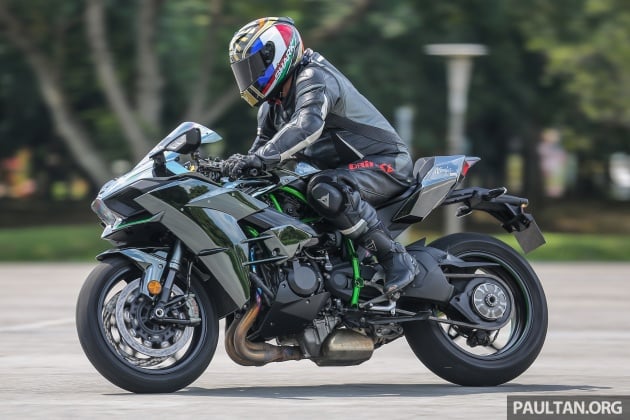



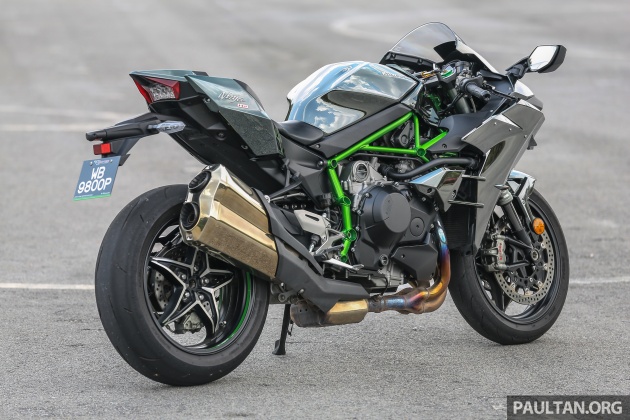



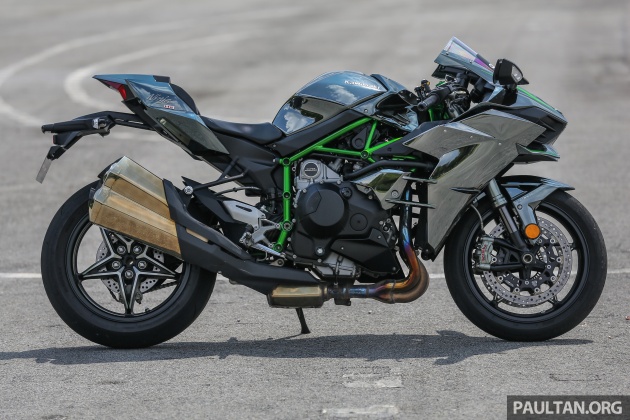



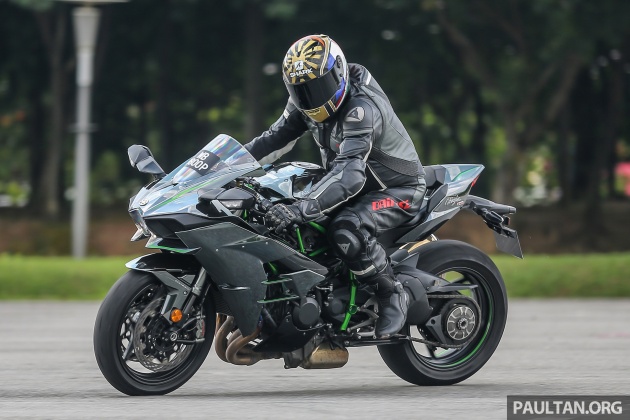

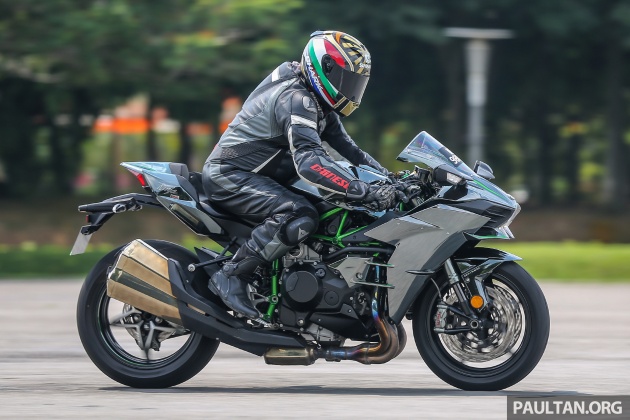
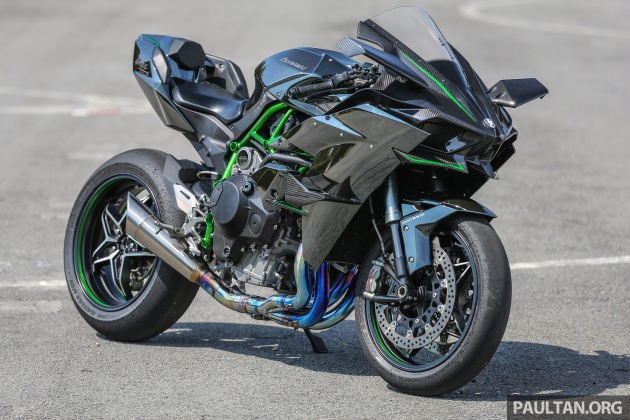



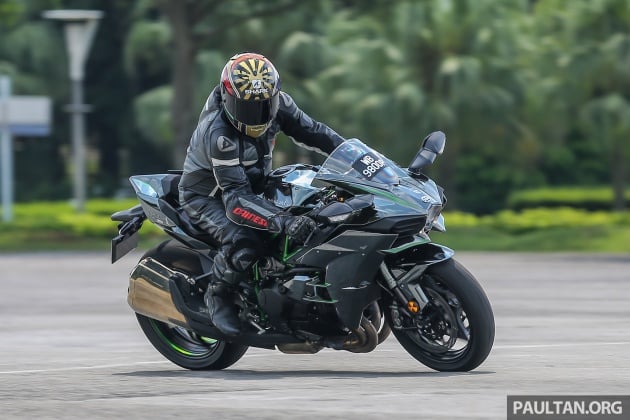
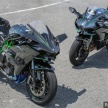
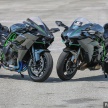
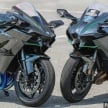
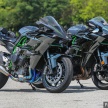
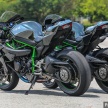
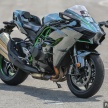
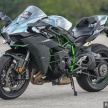
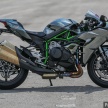
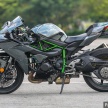
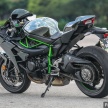
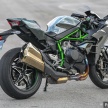
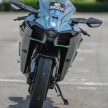
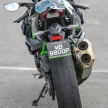
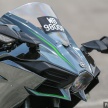
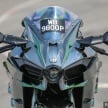
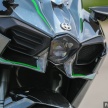
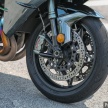
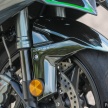
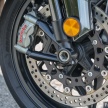
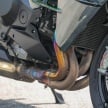
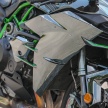
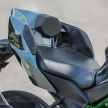
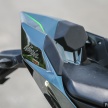
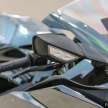
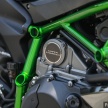
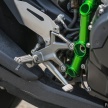
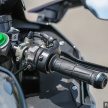
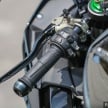
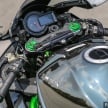
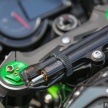
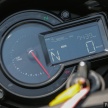
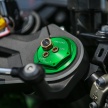
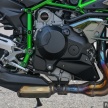
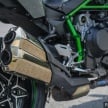
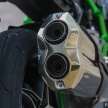
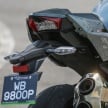
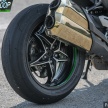
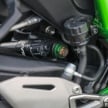
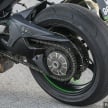
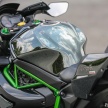
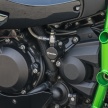
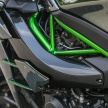
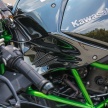
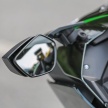
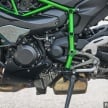
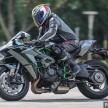
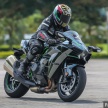
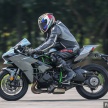


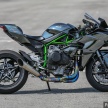
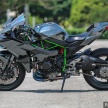
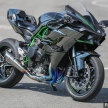
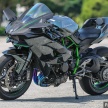
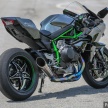
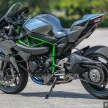
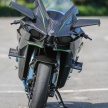
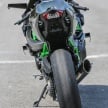
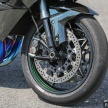
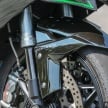
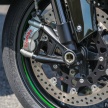
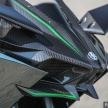
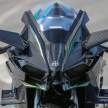
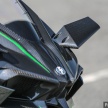
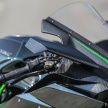

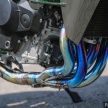
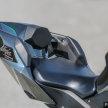
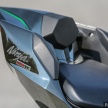
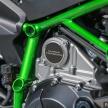
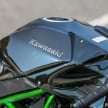
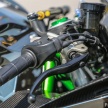
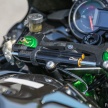
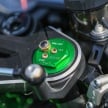
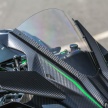
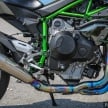
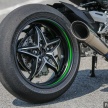
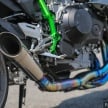
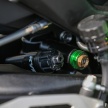
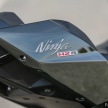
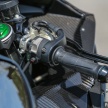
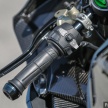
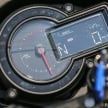
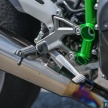
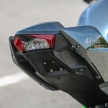
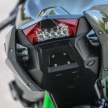
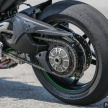
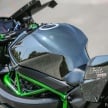
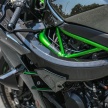
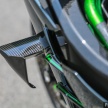
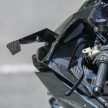
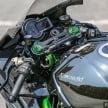
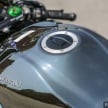
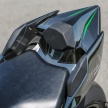
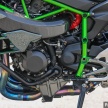
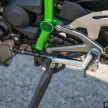
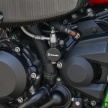
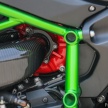
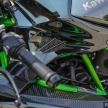
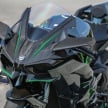

Awesome bike, great review..
Yeah,…good review! great bike…
Time to show my Ninja skills…
there is an owner here in Malaysia… wonder if he manage to ride beyond 300km/h at our highway..
this bike looks better than all those rempits’ kapchai.
I have the h2 carbon, and yes it is fast. my best friend owns the first gen hayabusa- and he was doing 340kmh when I blew past him and my speedo said 300? what is that about. I just pull the computer out to get reflashed. The company told me thirty more horse and no limiter….and yes it is beyond fast